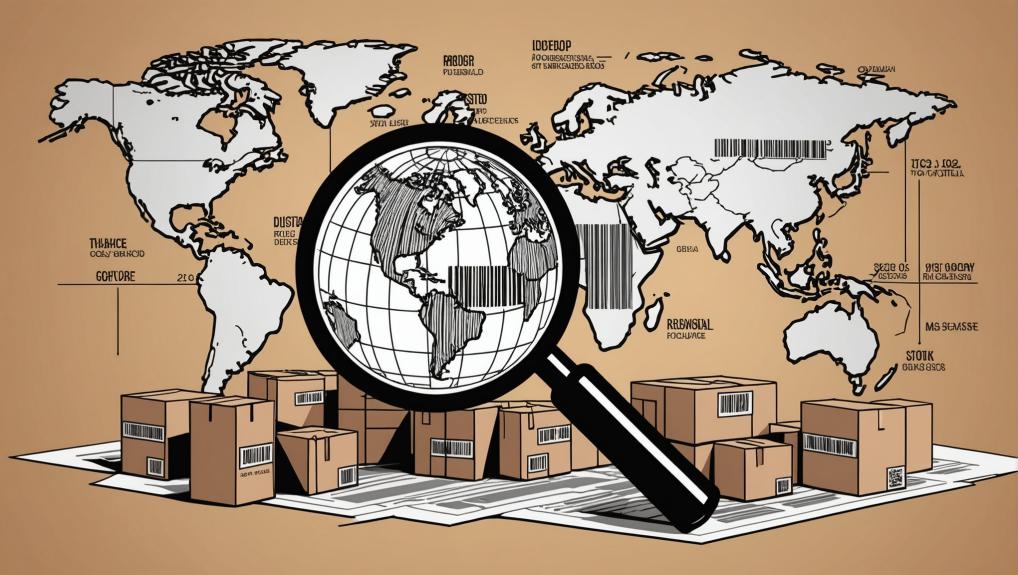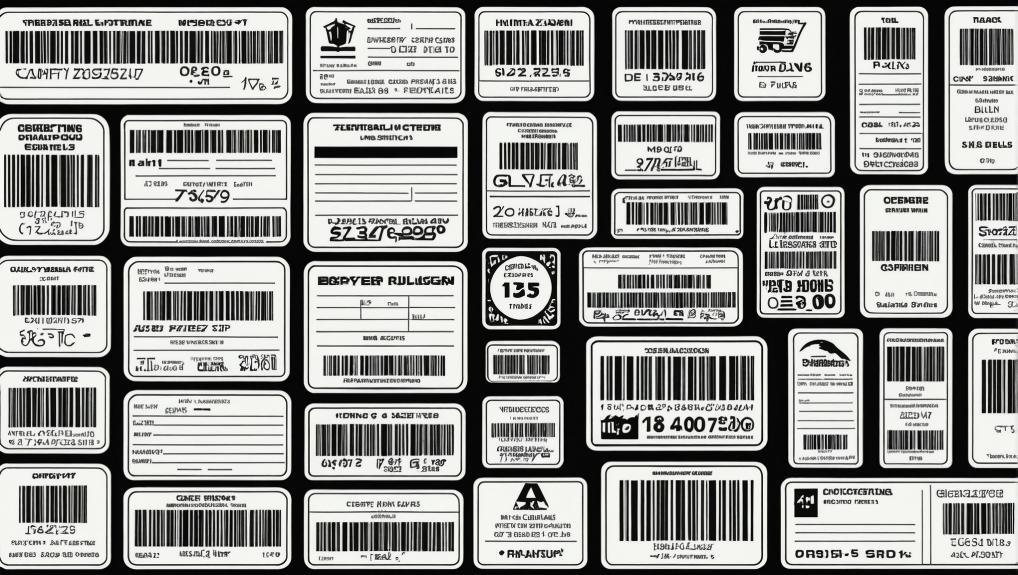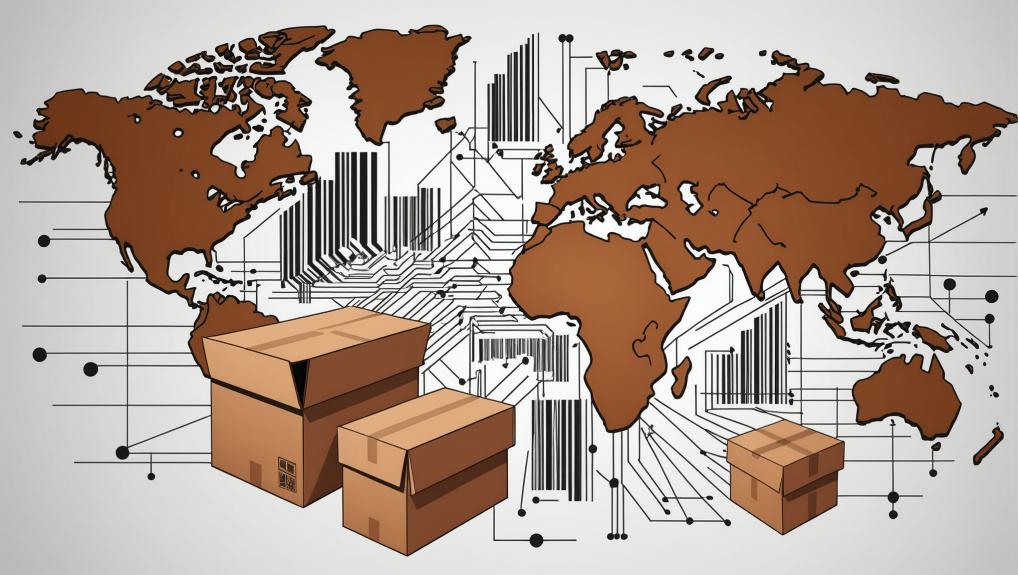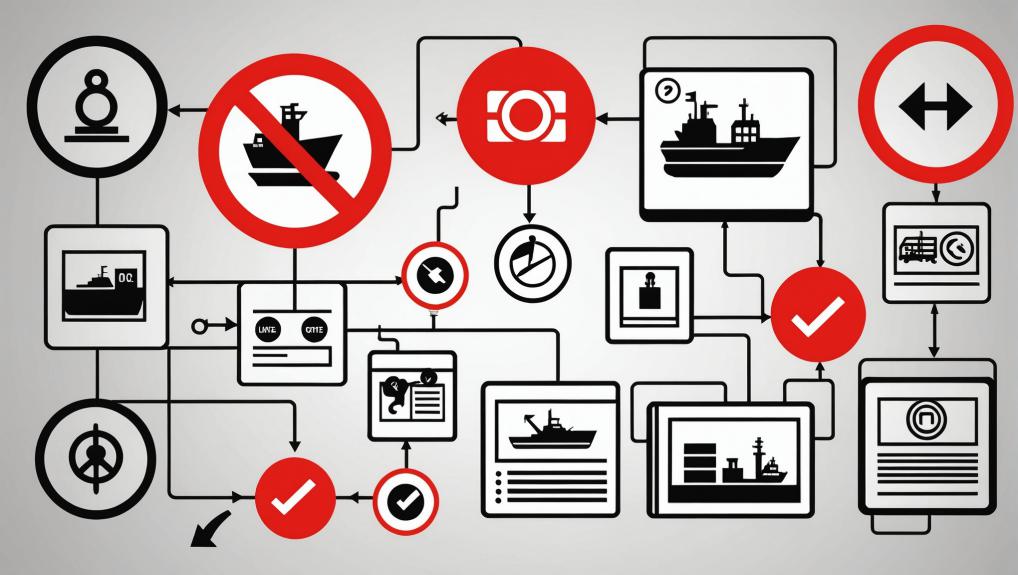Tracking numbers let you follow your packages every step of the way, from the moment they leave the sender until they reach your door. This simple code saves headaches by giving real-time updates, so you never have to guess where your stuff is. I remember waiting anxiously for a gift once, but thanks to the tracking number, I watched it move across states like a traveler on an adventure. Fun fact: over 90% of online shoppers check tracking info to avoid surprises. If you want peace of mind and control over your deliveries, understanding tracking numbers is the secret weapon you’ve been missing. Keep reading to unlock how to make this tool work wonders for you.
However, with each carrier using unique formats—often a mix of letters and numbers—understanding these can be tricky. USPS might use a 22-digit number, while UPS numbers start with ‘1Z’ and are 18 characters long.
The confusion surrounding tracking numbers can lead to frustration, especially when a package goes missing.
Fear not, as we’ll delve into the specifics of each carrier’s system, making sense of these formats to ensure accurate tracking and peace of mind. Let’s simplify the process and help you keep your deliveries in check.
Key Takeaways:
- Each carrier (USPS, UPS, FedEx, DHL, DPD) uses unique tracking number formats for efficient package monitoring and delivery accuracy.
- Understanding specific tracking formats helps resolve tracking errors, locate lost packages, and ensure effective communication with carriers.
- Tracking numbers provide real-time updates, reduce customer anxiety, and improve service efficiency by offering transparency and proof of delivery.
- Retrieving lost tracking numbers involves checking emails, receipts, contacting the sender or carrier, and using carrier account services.
What is a Tracking number?

A tracking number is a unique code assigned to a shipment, allowing its monitoring throughout the shipping process. This code, typically a mix of letters and numbers, is crucial for both senders and recipients to track the package from origin to destination.
As the package moves, it’s scanned at various checkpoints, updating the tracking data in real time.
Tracking numbers are carrier-specific, with unique formats for each shipping company, like FedEx, UPS, DHL, and USPS. These formats help identify the service provider and ensure accurate tracking.
The tracking number links all scans and updates to the specific package. This information can be accessed via the carrier’s website or app, providing transparency.
Users can track packages online, view estimated delivery dates, and monitor delays, enhancing the delivery experience.
What Are the Tracking Number Formats By Carrier?
Understanding tracking number formats used by different carriers is crucial for efficient package tracking.
Major carriers such as USPS, DHL, UPS, FedEx, and DPD use unique formats combining letters and numbers. Below, we outline the specific formats these carriers utilize, aiding you in easily tracking your shipments.
USPS
USPS tracking numbers vary based on the service used, from numeric sequences to alphanumeric combinations. Recognizing these formats helps in managing courier tracking numbers efficiently.
Priority Mail and Certified Mail use a 22-digit numeric format like 9205 5000 0000 0000 0000 00 and 9407 3000 0000 0000 0000 00, respectively.
Registered Mail also follows a 22-digit format, such as 9208 8000 0000 0000 0000 00.
Global Express Guaranteed features an 11-digit numeric format, like 82 000 000 00. For international services, Priority Mail Express International uses a 13-character alphanumeric format starting with two letters and ending with ‘US’, such as EC 000 000 000 US.
Priority Mail International follows a similar 13-character format, like CP 000 000 000 US.
Signature Confirmation uses a 22-digit format, for instance, 9202 1000 0000 0000 0000 00.
These varied formats ensure efficient tracking across different USPS services, allowing users to monitor their shipments effectively regardless of the service chosen.
DHL
DHL tracking numbers come in various formats, ensuring flexibility and reliability in package tracking. The most common format consists of 10 digits, such as 9999 9999 99, often used for express shipments.
DHL also uses a 20-digit tracking number format, such as 4221736293, typically for international shipments. Other formats include 14, 16, or 22 digits, providing adaptability based on the shipment type.
For U.S.-based shipments, DHL employs a format starting with ‘GM,’ followed by 15 to 21 digits. This format is tailored for domestic logistics, ensuring effective package monitoring within the United States.
Understanding these formats is essential for using DHL services. Familiarizing yourself with the specific tracking number formats ensures a smooth and efficient tracking experience, reflecting DHL’s commitment to reliable and versatile solutions.
UPS
UPS tracking numbers come in specific formats to simplify shipment tracking.
Most commonly, they consist of 18 characters, starting with ‘1Z.’ The typical format follows ‘1Z’ with a 6-character shipper number, a 2-digit service level indicator, and an 8-digit package identifier.
For example, a standard UPS tracking number might look like ‘1Z 999 AA1 01 2345 6784.’
Other formats include an 11-digit number starting with ‘T’ (e.g., T1234567890) and a 9-digit number without preceding letters.
Correctly entering the tracking number is key to monitoring shipments. Verify the entire number, including all characters and spaces. Even a small typo can cause tracking errors.
If issues persist, contacting UPS customer service can help resolve problems.
FedEx
FedEx uses several tracking number formats to ensure efficient package tracking and accurate shipment monitoring. Understanding these formats is crucial for those who want to track their shipments independently.
FedEx’s standard tracking number format usually consists of 12 digits, such as 9999 9999 9999. This is commonly used for most standard shipping services.
Besides the 12-digit format, FedEx also utilizes a 15-digit tracking number format like 9999 9999 9999 999, often for specialized or high-volume shipments.
For certain specialized services, FedEx employs tracking numbers that can extend to 20 or 22 digits.
These extended numbers, such as 9999 9999 9999 9999 9999 or 9999 9999 9999 9999 9999 99, are designed for complex or international shipping needs, offering greater precision and control over the tracking process.
DPD
DPD uses several tracking number formats to ensure each package is uniquely identifiable and traceable from sender to recipient. Typically, DPD tracking numbers are 14 digits long, such as 12345678901234.
This format ensures efficient tracking throughout the package’s journey, providing both the sender and recipient with real-time updates on the package’s status.
Besides the standard 14-digit format, DPD also uses alphanumeric tracking numbers, depending on the country and service.
For example, international shipments might use alphanumeric codes to accommodate different regional systems and enhance tracking accuracy.
Regardless of the format, the goal remains the same: to offer a reliable and precise tracking experience.
DPD’s diverse tracking formats facilitate the seamless movement of packages across various regions, ensuring that users can maintain oversight of their shipments.
By using these unique identifiers, DPD enhances transparency and accountability in the shipping process, empowering customers to stay informed and in control.
What is the Maximum Length of a Tracking Number?

The maximum length of a tracking number varies by carrier, each with specific character limits to ensure unique identification and effective package tracking.
For example, the United States Postal Service (USPS) allows up to 22 digits for domestic shipments and uses 13-character formats for international deliveries, such as EA 999 999 999 US.
DHL employs different standards, with carrier-independent ISO identifiers extending up to 35 characters, while their numeric identifiers usually consist of 10 digits.
UPS typically uses 18-character tracking numbers, exemplified by formats like 1Z 999 AA1 01 2345 6784, but can accommodate up to 20 characters for specific shipment types.
FedEx tracking numbers exhibit considerable variability, ranging from 12 to 34 characters, depending on the format used, including the 34-character Global Shipments Number (GSN).
DPD’s tracking numbers can reach up to 28 characters, as seen in examples like 0081 827 0998 0000 0200 45 327 276 N.
These varying lengths are crucial for ensuring each package’s unique identification and effective tracking throughout its journey from the sender to the recipient.
Understanding these limits helps streamline the shipping process and mitigate potential tracking errors.
Why is the courier tracking number important?
The courier tracking number is crucial for several reasons. First, it reduces customer anxiety by offering real-time updates on package status and location.
This transparency lets customers track their shipments independently, improving service efficiency by reducing inquiries and complaints.
Tracking numbers also help recover lost packages by providing a detailed journey trail, which speeds up issue resolution.
They serve as proof of delivery, documenting when and where a package was delivered, which is vital for resolving disputes or claims of undelivered shipments.
Moreover, they build trust and transparency. Customers appreciate knowing their shipments are monitored, fostering trust and potentially increasing loyalty.
Tracking capabilities can boost sales and customer retention by instilling confidence in the delivery process.
How Does a Tracking Number Help in Package Delivery?

A tracking number enhances package delivery by providing real-time visibility and transparency. Both senders and recipients can monitor the shipment’s journey from origin to destination.
This transparency reduces anxiety and keeps stakeholders informed about the package’s status.
Tracking numbers significantly improve customer satisfaction. Customers get updates on estimated delivery times, enabling them to plan accordingly and reducing the likelihood of missed deliveries. This fosters trust and reliability in the service provider.
Tracking numbers also boost customer service efficiency. Customers can check their shipment status independently, decreasing the volume of inquiries to customer service teams.
This lets representatives focus on more complex issues, improving overall efficiency.
Tracking numbers serve as proof of delivery by documenting when and where a package was delivered. This is crucial for resolving disputes or claims related to missing or undelivered packages.
Moreover, tracking numbers aid in exception monitoring and issue resolution. They help identify potential problems like delays or misrouted packages, enabling proactive measures to guarantee timely delivery.
How Do I Find My Tracking Number?
To find your tracking number, start by checking the shipping confirmation email, receipt, or order details on the retailer’s website or app.
These sources usually provide the tracking number soon after your purchase is confirmed and the package is shipped.
For online purchases, the tracking number is often included in an email from the retailer or the shipping carrier, detailing the shipping status and providing a direct link to track your package.
If you bought something in-store and opted for delivery, the tracking number will usually be on the receipt. This ensures you can monitor your package’s progress.
How does tracking numbers work?

Tracking numbers are unique identifiers that let senders and recipients monitor a package’s journey from origin to destination.
When a package is prepared for shipment, the carrier assigns a tracking number, which is printed as a barcode on the shipping label. This barcode gets scanned at various checkpoints throughout the logistics network, ensuring continuous data collection and updates.
As the package moves, each scan updates its tracking information in the carrier’s database, allowing for real-time status updates.
Users can access these updates through the carrier’s website or mobile app by entering the tracking number into the tracking tool.
This process offers transparency and visibility into the shipping journey, enabling users to stay informed about their package’s location and status.
When the package is delivered, the final scan confirms it has reached its destination. This confirmation includes the delivery date and time and may also document the recipient’s name, serving as proof of delivery.
What Happens If I Lose My Tracking Number?
If you lose your tracking number, don’t worry. Here are some practical ways to retrieve it or track your package without it:
1. Check Your Email: Look through your email inbox, spam, and trash folders for shipping confirmation emails from the sender or carrier. These emails usually contain the tracking number or a tracking link.
2. Review Receipts: Examine any sales or shipping receipts you received. The tracking number is often printed on these documents.
3. Contact the Sender: If you’re the recipient, reach out to the sender. They should have a record of the tracking number and can provide it to you.
4. Contact the Carrier: Provide the carrier’s customer service with details such as the shipment date, destination, and sender/recipient information. While some carriers may not disclose tracking numbers for privacy reasons, they can often assist in locating your package. Here are the contact numbers for major carriers:
- USPS: 1-800-275-8777
- UPS: 1-800-742-5877
5. Use Online Tools: Many carriers offer online services that let you manage and track packages without needing the tracking number. For instance:
- USPS Informed Delivery
- UPS My Choice
6. Visit the Shipping Center: If you sent the package, visiting the post office or shipping center where it was sent can be helpful. Staff there may be able to assist you in tracking your package.
How Do I Troubleshoot Tracking Number Errors?

How Do I Troubleshoot Tracking Number Errors?
To troubleshoot tracking number errors, start by verifying the tracking number itself.
Look for typographical errors like missing digits or incorrect characters. If the number seems correct, give it 24 hours; sometimes updates take time to appear in the carrier’s system.
Next, contact the seller or sender to confirm the tracking number. They may provide additional details or issue a new tracking number if necessary.
Ensure you’re using the correct carrier’s website. For example, a USPS tracking number won’t work on the FedEx site.
If problems persist, reach out to the carrier’s customer support for assistance; they can verify the tracking number and give status updates.
For newly issued or international tracking numbers, patience is crucial since delays can happen. Alternatively, use reference numbers or carrier account services like USPS Informed Delivery or UPS My Choice for tracking.
Third-party tracking tools like ParcelsApp or AfterShip can also be helpful for tracking across multiple carriers. If you suspect a scam, report it to the purchasing platform for further investigation.
Frequently Asked Questions
Can I Track Multiple Packages With One Tracking Number?
No, you can’t track multiple packages with one tracking number. Each package has a unique tracking number to ensure accurate monitoring. For example, if you order multiple items from Amazon, each shipment will have its own tracking number.
Do Tracking Numbers Provide Real-Time Location Updates?
Tracking numbers don’t provide real-time location updates. They offer updates at key transit points instead. Some carriers, like UPS and FedEx, might give more frequent updates, but true real-time tracking isn’t common.
Are Tracking Numbers Reused by Carriers?
Yes, carriers do reuse tracking numbers. This practice helps manage the immense volume of shipments. Carriers ensure that sufficient time elapses between reuses so that data from previous deliveries doesn’t interfere with new shipments.
Conclusion
Understanding tracking number formats across various carriers is key to efficient package monitoring and delivery.
Each carrier, including USPS, DHL, UPS, FedEx, and DPD, uses unique tracking number structures to ensure accurate shipment tracking.
Recognizing these formats, knowing how to find and use tracking numbers, and troubleshooting errors guarantee smooth logistics. This knowledge enhances the shipping experience through transparency and reliability in package delivery.
Recognizing these formats and knowing how to find and use tracking numbers help ensure parcels are easily traceable and delivered on time.
If you encounter errors, consult the carrier’s customer service or online resources for troubleshooting. This understanding boosts transparency and reliability in the shipping process, providing a better overall experience.

